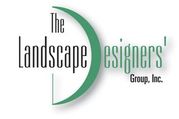|
Dawn Szelc, Clear Blue Landscapes - LDG Secretary 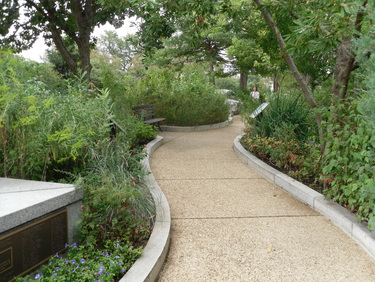 The Landscape Designers Group was treated to a triple tour on September 17 of the Smithsonian’s Pollinator Garden, the Urban Bird Habitat, and the Victory Garden. The tour of the gardens was led by James Gagliardi, who is currently a supervisory horticulturist with Smithsonian Gardens in Washington, D.C. James began by describing a book he recently authored called Encyclopedia of Garden Plants for Every Location on sale in the gift shop and also Amazon.com. I checked into it on Amazon.com and it sells for $29.41 new and has very good reviews. James described that the Smithsonian Gardens is its own museum. They have a number of collections in storage including slides on Victorian furniture, and an orchid collection which is maintained in the greenhouses in Suitland. The Pollinator Garden is located on the east side of the Natural History Museum which is the 2nd most popular museum in the world, the first being the Louvre, with 8 million people visiting per year. The garden was established in 1995 as the Butterfly Habitat garden. In 1998 they received a large financial gift and then put in signage and the granite curbs that outline all the beds. After almost 18 years new signs were badly needed, so in 2016 the signage was changed. It was updated to include all pollinators, instead of just butterflies, to be in line with President Obama’s direction. President Obama issued a Presidential Memorandum directing an interagency Task Force to create a Strategy to Promote the Health of Honey Bees and Other Pollinators. Under the leadership of the U.S. Environmental Protection Agency (EPA) and U.S. Department of Agriculture (USDA), the Task Force released its Strategy, with three overarching goals:
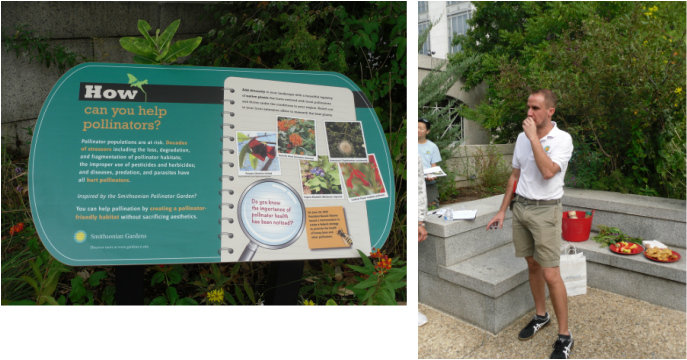 James showed us a dead Lace Bark Pine that is in the garden. He had to get permission to keep it there as he wanted to display it as a natural habitat – a snag. Snag as in wildlife tree— a place to nest or den; a source of food for insects, who are in turn food for many other creatures; a perch for lookout, and more. He then described that they do two plantings of annuals per year. In late September the new designs are reviewed in-house. In October they pull out the coleus and other summer annuals and plant pansies and kale with the other plants put in in the late spring. He advised not to cut plants back in the fall but to wait until spring to provide winter food sources and habitats for birds and insects. They have 15 greenhouses in Suitland to stock the gardens including all holiday décor that goes inside the Natural History Museum. 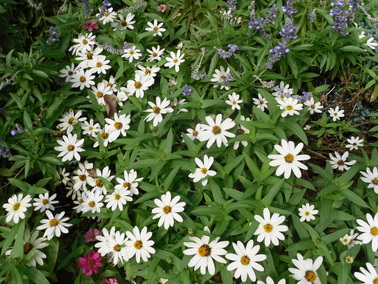 Although the garden is fairly small it has many species of plants, and James compared it against the Mall which is a large expanse and has 2 species – grass and American Elm. About 85% of the Pollinator garden includes native plants. He then walked us through the new profile signs - one for each pollinator: Bees, Butterflies, Hummingbirds, Flies, Moths, Beetles, and additionally wind, talking about the plants in those areas. The host plants for each pollinator are very important for example Oak trees host thousands of insects. Mountain mint is another popular plant with the wildlife, but can grow aggressively. James told of a number of ways in which the plants attract their pollinators – having landing stripes showing the bees where to land, the flower of the paw-paw attracts flies with a putrid smell much like rotting meat, and the moths are attracted to night blooming flower like moon flower. Beetles love the magnolia flowers and James stated there are four times the number of beetle species as the number of animals with backbones. The pollinators were busy that morning as we saw many butterflies including monarchs, moths, bees, and a hummingbird. 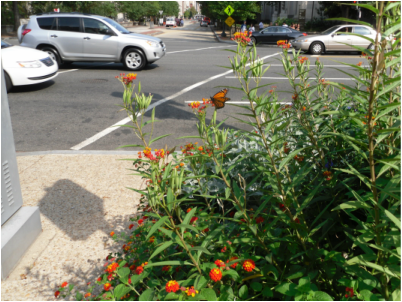 From there we moved to the front of the Natural History Museum on Constitution Ave. We stood near a very large and old elm tree which is called the Witness Elm. It was planted around 1850 and has witnessed many momentous events pass between the White House and the US Capitol during its lifetime. Along the front at the entrance we stopped to check out the Evolution Garden – with its prehistoric dwarf ginkgo, and a number of interesting evergreens shown below. There were numerous Monarch butterflies on the milkweed planted in the hell strip in front of this which was very unexpected!. 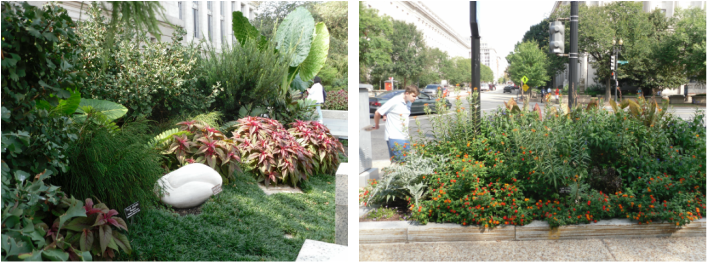 Moving towards 12th St NW we entered into the newly created garden called the Urban Bird Habitat. This is situated at the corner of Constitution Ave and 12 St NW. It is a nicely shaded area with a large number of woodland plants and a beautiful Dawn Redwood. The walkways are currently mulched, but James must get them to be ADA accessible to open it to the public. There was an interesting sculpture located there which was dedicated to the last Passenger Pigeon, whose remains are housed in the Smithsonian. James commented that among his many tasks he has also had to learn how to care for a bronze sculpture. The bird habitat extended along the side of the museum with the hell strips there planted with Pink Muhly grass and other flowers. Our final destination of the morning was the Victory Garden on the other side of 12th St NW next to the American History Museum and is modeled after the gardens called for during World War II in the 1940’s. This garden is not part of James’ responsibility but he was able to talk to some of the work there. There were many vegetables, herbs, and other edibles there that were available during that time period, showing the uses of plants for medicinal purposes as well as food. The garden is harvested and used for special events in the museum.
0 Comments
|
AuthorsLDG is a non-profit corporation dedicated to the exchange and enhancement of knowledge relevant to the landscape design profession. We are a group of professional designers in the metropolitan Washington, DC area. Membership is meant for students studying and professionals employed in landscape design or associated professions (i.e. arborists, installers, contractors, etc.). Archives
October 2023
CategoriesPast Newsletters can be found in the Members Only Section of the LDG Membership Connection. You must sign in to view these files.
Past Newsletters |
|
Search for a Landscape Designer in Your Area:
|
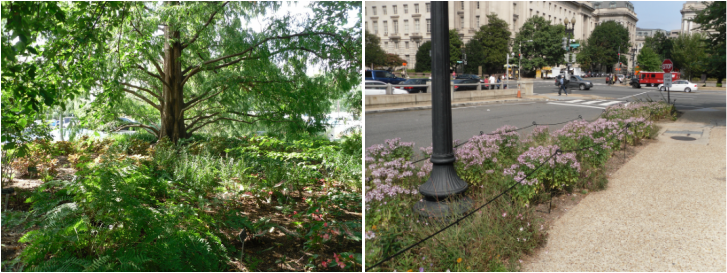
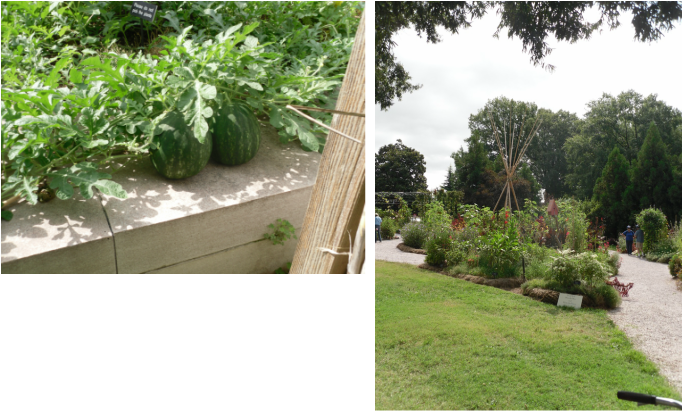
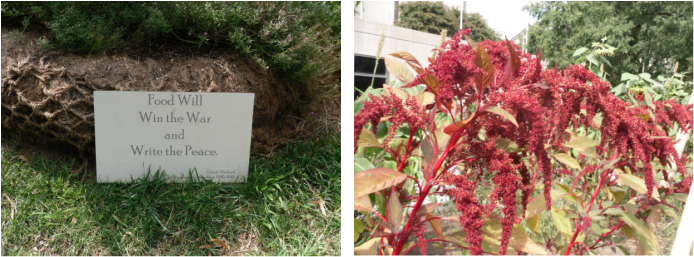
 RSS Feed
RSS Feed
